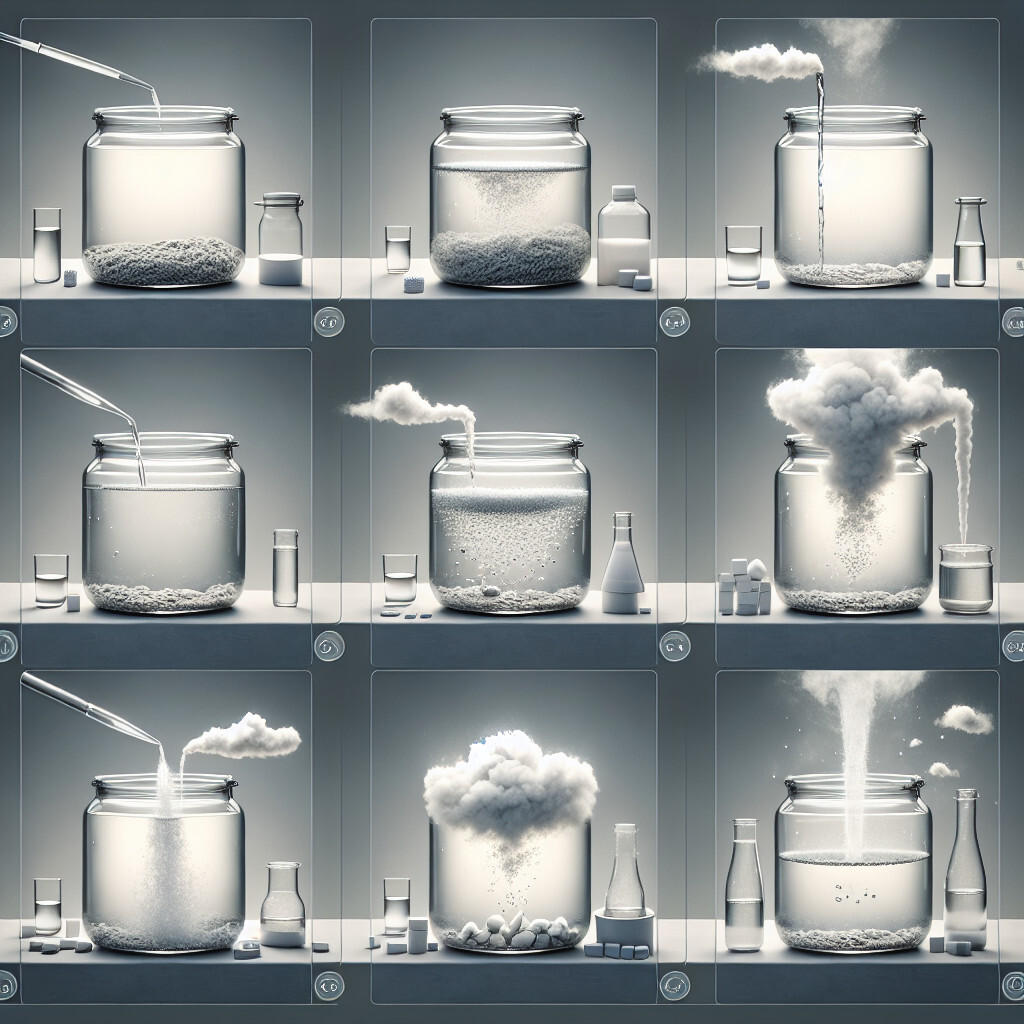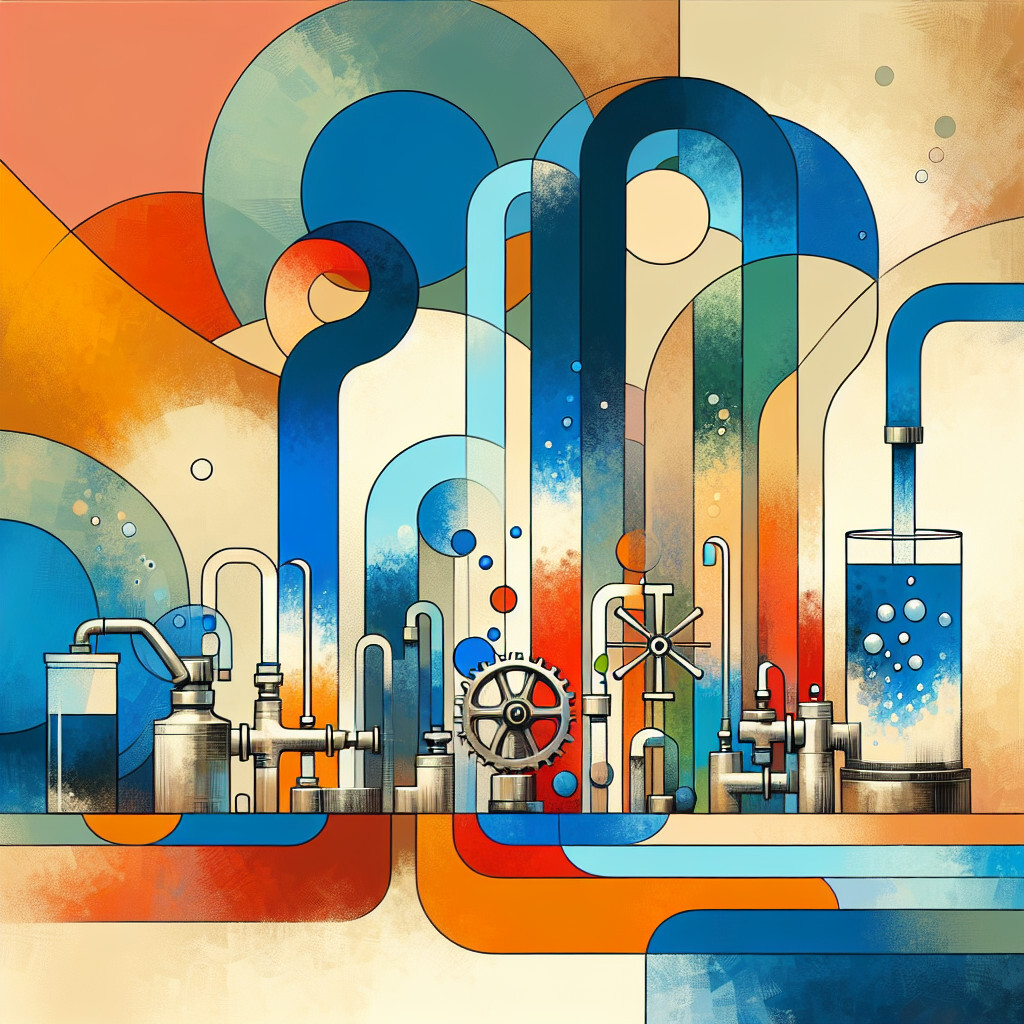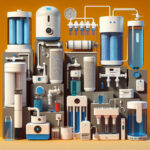-
Table of Contents
“Making Clear Water Clearer, No Filter Needed!”
Introduction

Cleaning tap water without a filter involves several methods that can help remove impurities and make the water safe for consumption. These methods include boiling, disinfection using chemicals, distillation, and solar purification. Each method has its own advantages and disadvantages, and the choice of method depends on the type of impurities present in the water and the resources available. This guide will provide detailed steps on how to effectively clean tap water without the use of a filter.
Exploring Boiling as a Method to Purify Tap Water
Tap water, while generally safe for consumption, can sometimes contain impurities that may affect its taste, smell, and overall safety. While water filters are a popular solution to this issue, they are not always accessible or affordable for everyone. Fortunately, there are alternative methods to purify tap water, one of which is boiling. This article explores the process of boiling as a method to purify tap water.
Boiling is a simple and cost-effective method of water purification. It works by heating the water to a temperature that kills or inactivates most types of disease-causing organisms. The process is straightforward and requires only a heat source and a pot or kettle. To begin, fill the pot with tap water and place it on the stove. Turn the heat to high and wait for the water to reach a rolling boil. Once boiling, let the water continue to boil for at least one minute. For those living at altitudes above 2,000 meters, the boiling time should be extended to three minutes to account for the lower boiling point of water at high altitudes.
After boiling, it is crucial to let the water cool naturally and store it in a clean, covered container. It is also important to note that while boiling effectively kills bacteria, viruses, and parasites, it does not remove chemical contaminants or heavy metals. Therefore, if the tap water is suspected to contain such impurities, additional treatment methods may be necessary.
One such method is distillation, which involves boiling the water and then collecting the steam in a clean container where it condenses back into liquid form. This process not only kills most types of disease-causing organisms but also removes many chemical contaminants. However, distillation requires special equipment and is more energy-intensive than simple boiling.
Another method is the use of disinfecting chemicals such as chlorine or iodine. These chemicals kill most types of disease-causing organisms and can be used in conjunction with boiling to ensure the safety of the water. However, they do not remove chemical contaminants and can affect the taste and smell of the water.
Despite its limitations, boiling remains a reliable method of water purification, especially in emergency situations or when no other options are available. It is a method that has been used for centuries and continues to be used today in many parts of the world. It is a testament to the fact that sometimes, the simplest solutions are the most effective.
In conclusion, boiling is a practical and accessible method of purifying tap water. It effectively kills most types of disease-causing organisms and requires no special equipment or significant expense. However, it does not remove chemical contaminants or heavy metals, so additional treatment methods may be necessary depending on the quality of the tap water. Regardless, boiling serves as a valuable tool in the quest for clean, safe drinking water.
The Role of Solar Disinfection in Cleaning Tap Water
The quality of tap water varies greatly depending on the location and the source of the water. In some areas, tap water may contain harmful bacteria, viruses, and parasites that can cause diseases. Therefore, it is essential to clean tap water before consumption. While there are many methods to purify tap water, such as using a water filter, boiling, or using chemical disinfectants, these methods may not always be available or affordable. This article will focus on an alternative method of cleaning tap water without a filter, known as solar disinfection.
Solar disinfection, also known as SODIS, is a simple, economical, and effective method for improving the microbiological quality of drinking water. It uses the sun’s ultraviolet (UV) light and increased temperature to destroy pathogenic microorganisms in water. This method is particularly useful in areas where other water treatment methods are not readily available or are too expensive.
The process of solar disinfection is straightforward. It involves filling a transparent plastic or glass container with tap water and then exposing it to full sunlight for at least six hours. The UV radiation from the sun kills the harmful microorganisms in the water, making it safe to drink. The effectiveness of this method depends on the intensity of the sunlight and the clarity of the water. Therefore, it is more effective in sunny climates and with relatively clear water.
Solar disinfection works by damaging the DNA of the microorganisms in the water, preventing them from reproducing. The UV radiation also produces reactive oxygen species in the water, which can further damage the microorganisms. Additionally, the heat from the sun can increase the water temperature, which can enhance the disinfection process. However, it is important to note that solar disinfection does not remove chemical contaminants from the water. Therefore, it is most effective when used in combination with other water treatment methods, such as filtration or boiling, to ensure the removal of both biological and chemical contaminants.
Despite its simplicity, solar disinfection has been proven to be highly effective in improving the quality of drinking water. Numerous studies have shown that it can significantly reduce the concentration of various types of bacteria, viruses, and parasites in water. Moreover, it has been endorsed by the World Health Organization as a viable method for household water treatment and safe storage.
Solar disinfection also has several advantages over other water treatment methods. It does not require any chemicals or electricity, making it a sustainable and environmentally friendly option. It is also easy to implement and does not require any special equipment or technical skills. Furthermore, it is a cost-effective method, as it only requires a transparent container and sunlight, which are readily available in most parts of the world.
In conclusion, solar disinfection is a simple, effective, and affordable method for cleaning tap water without a filter. It uses the sun’s UV light and heat to kill harmful microorganisms in the water, making it safe to drink. However, it is most effective when used in combination with other water treatment methods to ensure the removal of both biological and chemical contaminants. Therefore, it is a valuable tool in improving the quality of drinking water, particularly in areas where other water treatment methods are not readily available or are too expensive.
Understanding the Process of Distillation for Tap Water Purification
Understanding the process of distillation for tap water purification is a crucial step in ensuring the safety and quality of the water we consume daily. This method is particularly useful for those who do not have access to a water filter or are looking for an alternative way to clean their tap water.
Distillation is a simple yet effective process that involves heating water to its boiling point, capturing the steam, and then condensing it back into liquid form in a separate container. This process is based on the principle that water and contaminants have different boiling points. When water is heated, it turns into steam leaving behind most of the impurities. The steam is then cooled and condensed back into water in a separate container, resulting in purified water.
The first step in the distillation process is to fill a large pot with tap water. The pot should be large enough to hold a significant amount of water but also leave enough room for a smaller container to be placed inside. The smaller container will be used to collect the distilled water.
Once the pot and smaller container are properly arranged, the next step is to create a condensation effect. This can be achieved by placing a lid upside down on the pot. The purpose of the inverted lid is to direct the steam towards the smaller container. As the water boils, steam rises, hits the cool lid, condenses, and then drips into the smaller container.
To enhance the condensation process, ice can be placed on the inverted lid. The cold temperature of the ice will cause the steam to condense more quickly and efficiently. It is important to note that the ice should be replaced as it melts to maintain the cold temperature on the lid.
The process of distillation may take some time, depending on the amount of water being purified. It is essential to monitor the process closely to ensure that the water does not completely evaporate. Once the process is complete, the distilled water in the smaller container should be allowed to cool before consumption or storage.
While distillation is an effective method of purifying tap water, it is important to note that it may not remove all types of contaminants. Certain volatile organic compounds (VOCs) have boiling points close to or lower than water, which means they may vaporize along with the water and end up in the distilled water. Therefore, if the tap water is suspected to contain such contaminants, additional purification methods may be necessary.
In conclusion, distillation is a simple and effective method of purifying tap water without the use of a filter. It is a process that can be easily carried out at home with basic kitchen equipment. However, it is important to be aware of its limitations and consider additional purification methods if necessary. By understanding and applying the process of distillation, one can ensure the safety and quality of their drinking water.
Using Chlorination to Clean Tap Water at Home
The quality of tap water can vary greatly depending on your location and the source of your water. While many developed countries have stringent regulations to ensure the safety of tap water, it is not uncommon for individuals to still be concerned about potential contaminants. For those who do not have access to a water filter, or prefer an alternative method, chlorination is a viable option for cleaning tap water at home.
Chlorination is a process that involves adding chlorine to water in order to kill bacteria, viruses, and other microorganisms that can cause diseases. This method has been used for over a century and is still widely used today due to its effectiveness and affordability. However, it’s important to note that while chlorination is effective in eliminating many harmful microorganisms, it may not remove all types of contaminants, such as certain chemicals, heavy metals, and salts.
To begin the chlorination process, you will first need to obtain a source of chlorine. This can be in the form of liquid bleach, chlorine tablets, or granular chlorine. It’s crucial to ensure that the product you choose is intended for water purification and does not contain any additional chemicals or fragrances.
Once you have your chlorine source, you can start the chlorination process. If you’re using liquid bleach, a general guideline is to add two drops of bleach per quart of water. For chlorine tablets or granular chlorine, follow the manufacturer’s instructions on the packaging. After adding the chlorine, stir the water thoroughly to ensure the chlorine is evenly distributed.
After the chlorine has been added and mixed, it’s important to let the water stand for at least 30 minutes. This waiting period allows the chlorine to react with the water and kill any present microorganisms. However, if the water is cloudy or contains visible particles, it may be necessary to let it stand for a longer period of time, or even repeat the chlorination process.
Once the waiting period is over, the water should be safe to drink. However, some people may find the taste of chlorinated water to be off-putting. If this is the case, pouring the water from one clean container to another several times can help to remove some of the chlorine taste. Alternatively, letting the water stand uncovered for a few hours can allow the chlorine to evaporate.
In conclusion, chlorination is a simple and effective method for cleaning tap water at home without a filter. It’s a process that requires minimal equipment and can be done by anyone, regardless of their technical skill level. However, it’s important to remember that while chlorination can kill many types of harmful microorganisms, it may not remove all potential contaminants. Therefore, if you have serious concerns about the quality of your tap water, it may be worth considering other purification methods or consulting with a water quality professional.
Q&A
1. Question: How can I clean tap water using boiling?
Answer: Boiling is a simple method to clean tap water. Fill a pot with water and bring it to a boil. Let it boil for at least one minute, then let it cool before using. This method kills most types of disease-causing organisms.
2. Question: Can I use bleach to purify tap water?
Answer: Yes, you can use bleach to purify tap water. Add 1/8 teaspoon (or 8 drops) of unscented, liquid chlorine bleach for each gallon of water. Stir it well and let it stand for 30 minutes before using.
3. Question: How can I use distillation to clean tap water?
Answer: Distillation involves boiling water and then collecting the vapor that condenses back to water. The condensed vapor will not include salt and other impurities. To distill, boil a pot of water until it turns into steam, then capture the steam in a clean container where it can condense.
4. Question: Can sunlight be used to purify tap water?
Answer: Yes, sunlight can be used to purify water through a process called solar disinfection. Fill a clear plastic or glass container with water and leave it in direct sunlight for at least 6 hours. The UV radiation from the sun kills bacteria and viruses.
Conclusion
In conclusion, tap water can be cleaned without a filter through various methods such as boiling, using disinfecting chemicals like chlorine, iodine, or hydrogen peroxide, or by using ultraviolet light. Solar disinfection is another effective method. However, these methods may not remove all types of contaminants, especially heavy metals and certain types of bacteria. Therefore, while they can be used in emergency situations, they should not replace a proper water filtration system for regular use.






